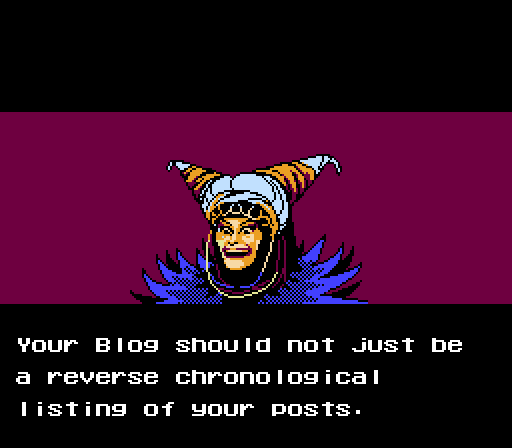The Robots Exclusion Protocol, popularly known as Robots.txt, is a crucial aspect of website management and has been widely used by website owners to regulate the access of web robots to their websites. This text file, which is placed in the root directory of a website, acts as a guide for search engines and other web robots, directing them to the areas of the website that should not be crawled or indexed.
This enables website owners to keep on top of the technical SEO task of maintaining a level of control over the visibility and accessibility of their website’s content, safeguarding sensitive information and restricted pages from being inadvertently indexed by search engines. In essence, Robots.txt serves as a gatekeeper, helping to ensure that website owners have full control over the way their site is visited and indexed by web robots.

Purpose of Robots.txt
- “Unleashing the Power of Robots.txt: The Robots.txt file serves a vital role in the digital landscape, offering website owners a crucial level of control and visibility over their online presence. By utilizing this tool, website owners can safeguard sensitive information, optimize their site’s search engine rankings, and enhance the user experience for their audience.
- Guarding Confidentiality: The Robots.txt file allows website owners to specify which sections of their site should remain off-limits to web robots, preventing sensitive information from being accidentally indexed and made publicly accessible. This helps secure the website and maintain its privacy. For additional security measures, website owners can also consider implementing DDoS protection to safeguard against Distributed Denial of Service attacks.
- Maximizing SEO Potential: In addition to protecting sensitive information, the Robots.txt file can also be leveraged to improve a website’s search engine optimization. By determining which pages should not be crawled, website owners can optimize their site’s relevance and visibility, ensuring that only the most valuable pages are indexed by search engines.
- Enhancing User Engagement: The Robots.txt file also plays a role in creating a better user experience. By limiting the amount of pages web robots crawl, website owners can reduce page loading times and improve overall user engagement.
How to create a Robots.txt file
- Unlock Your Creativity: The first step to creating a Robots.txt file is to unleash your creativity and think about what you want to accomplish with your website and which parts you want to be visible to web robots.
- Fire Up Your Text Editor: Open your preferred text editor, whether it’s Notepad, Sublime Text, or any other, and start by creating a plain text file.
- Give It a Unique Identity: Name your file “robots.txt” and make sure to use all lowercase letters to give it a unique identity that is easily recognizable by web robots.
- The Key to Your Website’s Inner Sanctum: The Robots.txt file should be placed in the root directory of your website, which acts as the key to the inner sanctum of your digital presence.
- Customize Your Instructions: With the Robots.txt file in place, you can now edit it with custom instructions for web robots. The “User-agent” and “Disallow” directives are the most commonly used instructions, but feel free to get creative and develop your own unique set of instructions.
- Example: Here is an example of a simple Robots.txt file to get you started:
User-agent: * Disallow: /secret-folder/
In this example, the “User-agent” directive applies to all web robots, and the “Disallow” directive instructs web robots not to crawl the “/secret-folder/” directory. - Verify Your Work: Finally, always make sure to verify that your Robots.txt file is working as intended by visiting “https://www.example.com/robots.txt“, and replacing “example.com” with your own domain name. This will help to ensure that your website is protected and that web robots are following your instructions.

Types of instructions in a Robots.txt file
- User-agent Directive: The User-agent directive serves as a way to address which web robots the following rules apply to. You can tailor the instructions for a specific search engine robot by specifying “User-agent: Googlebot”, for example.
- Disallow Instruction: The Disallow instruction is utilized to inform web robots which pages or sections of a website should not be crawled or indexed. By specifying “Disallow: /secret-folder/”, you can prevent web robots from exploring the designated “/secret-folder/”.
- Allow Directive: The Allow directive is put in place to explicitly permit web robots to crawl a particular page or directory. If you want to allow web robots to crawl the “/public-folder/”, you can specify “Allow: /public-folder/”.
- Sitemap Specification: The Sitemap directive is utilized to mention the location of a website’s sitemap.xml file. This file acts as a blueprint for web robots to understand the structure of a website and to identify any new or updated pages to crawl.
- Crawl-delay Instruction: The Crawl-delay instruction is used to determine the amount of time, in seconds, that web robots should wait between requests to a website. This helps regulate the amount of traffic generated by web robots and avoids overloading a website’s server.
Note: The types of instructions used in a Robots.txt file may differ for each web robot and may change or expand over time. Hence, it’s crucial to check the documentation for each specific web robot to determine which instructions are supported and the right way to use them.
Limitations of Robots.txt
Inadequate security: While the Robots.txt file is useful for excluding certain sections of a website from being crawled and indexed by web robots, it should not be relied on as a security measure. Information that is excluded from the search results may still be accessible to anyone who knows the direct URL for the page, and the information in the Robots.txt file may be accessed and used by malicious actors to identify sensitive areas of a website to target.
Inconsistent support: Different web robots may have varying levels of support for the directives in the Robots.txt file, and may interpret the instructions differently. Some web robots may not recognize certain directives, while others may have additional directives that are not supported by other robots. It is important to consult the documentation for each specific web robot to determine which instructions are supported and how they should be used.
For more information and understanding on Robots.txt, please refer to the following citation(s)
Yes, robots.txt CAN mean that much – but typically, it’s more important for larger sites with larger swaths of content and potential use cases for restricting results from indexation.
Jeremy Rivera
Additionally, an XML Sitemap declaration can be added as well to provide an additional signal about your XML Sitemaps or Sitemap Index file to search engines.
https://technicalseo.com/tools/docs/robots-txt/
On server response indicating Redirection (HTTP Status Code 3XX)
https://www.robotstxt.org/norobots-rfc.txt
a robot should follow the redirects until a resource can be
found.
Google generally caches the contents of robots.txt file for up to 24 hours, but may cache it longer in situations where refreshing the cached version isn’t possible (for example, due to timeouts or 5xx errors). The cached response may be shared by different crawlers. Google may increase or decrease the cache lifetime based on max-age Cache-Control HTTP headers.
https://developers.google.com/search/docs/crawling-indexing/robots/robots_txt
Although adding the sitemap to Google Search Console is normally enough for Google, we recommend adding it to the robots.txt as well. This helps other search engines find the sitemap.
https://www.siteguru.co/seo-academy/what-is-a-robots-txt-file
https://ahrefs.com/blog/robots-txt/Sitemap: [URL location of sitemap] User-agent: [bot identifier] [directive 1] [directive 2] [directive ...] User-agent: [another bot identifier] [directive 1] [directive 2] [directive ...]
In the Search Console you can have the URL checked. By doing this, you are requesting that the page be crawled again. After all, the crawlers do not come by your website all the time, especially not when nothing is happening, ie, there is no new content
https://www.skynetindia.info/blog/the-comprehensive-guide-to-robots-txt-file-for-seo/
Conclusion
The Robots.txt file serves as a valuable resource for website owners to regulate the access of web robots to their sites. The file allows website owners to dictate which sections of their site should or should not be crawled and indexed by web robots. However, it is crucial to acknowledge that not all web robots abide by the instructions specified in Robots.txt and that there are limitations to the control it provides over individual pages. To ensure complete control over the visibility and accessibility of a website, website owners should utilize a combination of Robots.txt and other methods, such as the noindex tag and password protection.


